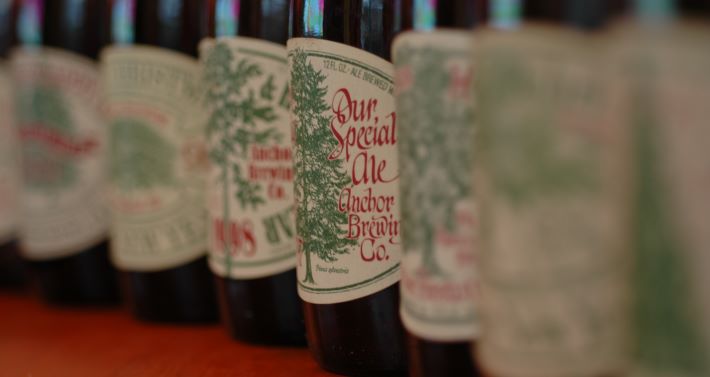
I can’t count the number of times I’ve seen a brewery profile that includes the brewer/founder being interviewed say something along the lines of, “We don’t want to be huge.”
I thought of this last week when I read Jeff Alworth’s post about Skagit Valley Malt suddenly closing, because I had learned a lot more about the business of running a craft malting company after meeting Jeff Bloem during the Wheatland Spring Farm + Brewery Land Beer Fest a couple of weeks ago.
He started Murphy & Rude Malting Co. in his basement. He’s expanded, but has been cautious.
Between the time I read the question in Alworth’s headline (“Is craft malt in trouble?”) and a post at Good Beer Hunting Sightlines highlighting the risk of craft malt expansion I dropped him an email. I probably would not have if I had known Kate Bernot would contact him for the Sightlines story. (Because, honestly, I am inherently lazy.)
I asked him if he could describe a scenario where craft malting is viable. Turns out, he is living one. He wrote back:
“Our recent modest capacity expansion served as a much needed right-sizing that improved cash flow, jettisoned us into healthy profitability, and fixed a plethora of issues we were struggling with as an under-built craft malt house — bumpy cash-flow due to delayed invoicing brought about by constant out-of-stocks and backorders.
“This right-sizing was Phase 1 of a five-year, three-phase growth plan and Phase 2 sees us making additional modest investments in additional production equipment, as well as much-needed material handling upgrades that are meant to reduce the amount of time-sucking manual labor costs associated with getting a batch from steep tank to bags on a pallet.
“What I have come to terms with is that the financing play for expansion has to jive with malt house aspirations, not the other way around. Letting the needs and requirements of the financing terms influence our goals or take undue risks is simply too reckless for me. In short, unwise ego-driven aspirations need to be replaced with modest, incremental growth strategies utilizing myriad funding options all at the same time (private capital, bank, community rounds, government program funding, and organic).
“It takes forever because in funding an agriculture-based business you immediately go from an ocean of financing options to a hot tub of very hard to find slow-money-minded investment partners. While customer demand is there, trying to service all of it immediately doesn’t necessarily make financial sense.”
In her story, Bernot talks to Ron Extract at Garden Path Fermentations in Washington, and he points to a parallel between breweries and maltsters. Expansion at any cost doesn’t always work out, so I am left with questions. Are economies of scale more important for maltsters than brewers? Are craft maltsters agents of change? Are brewers, and ultimately drinkers, willing to pay for this change?
You might also enjoy
– Why Rocket Pop Is This Summer’s Hottest Beer Flavor. This may or may not be true, but I am totally down with the “taste the stick” experience.
“When you eat those popsicles, you taste the actual stick,” WeldWerks head brewer Skip Schwartz says. Think of gnawing the cold, wet piece of wood, sucking out the last sugary juices. “Even if it’s not a predominant flavor, to me it’s part of that beer,” he says.
– What Does It Mean to Be an Asian American Brewer? The next question should be, What will it mean in another decade?
– Beer Group Asks Drinkers, Legislators to Pick Sides in Beer’s Battle with Spirits. But what if I like wine?
– Henekey’s Long Bar and the birth of the pub chain. The rabbit hole here leads to Norah Docker, and if you keep going to “The Judge, the Duke and the Frenchman.”
– A Turn-of-the-Twentieth-Century California Steam Beer. Michael Jackson once referred to steam beer as the lone American indigenous beer style. Now we know better.
– Man over machine. Spoiler alert, in Jake Against (recipe written by a human) against The Machine (AI recipe) Jake Against wins.
– Defining Craft: Italian Do it Better. I can’t agree, because adding a few more stipulations and even making it a legal definition means little to consumers. Same old problem.



